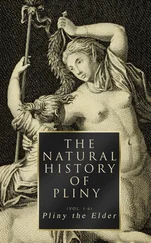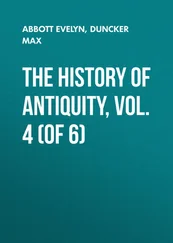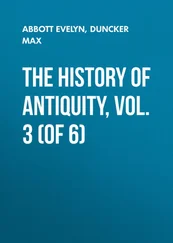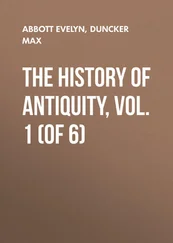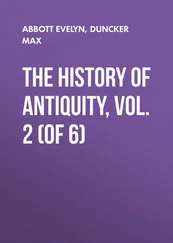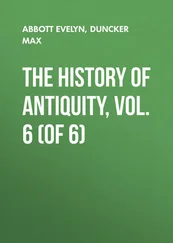Homer B. Hulbert - The History of Korea (Vol.1&2)
Здесь есть возможность читать онлайн «Homer B. Hulbert - The History of Korea (Vol.1&2)» — ознакомительный отрывок электронной книги совершенно бесплатно, а после прочтения отрывка купить полную версию. В некоторых случаях можно слушать аудио, скачать через торрент в формате fb2 и присутствует краткое содержание. Жанр: unrecognised, на английском языке. Описание произведения, (предисловие) а так же отзывы посетителей доступны на портале библиотеки ЛибКат.
- Название:The History of Korea (Vol.1&2)
- Автор:
- Жанр:
- Год:неизвестен
- ISBN:нет данных
- Рейтинг книги:3 / 5. Голосов: 1
-
Избранное:Добавить в избранное
- Отзывы:
-
Ваша оценка:
- 60
- 1
- 2
- 3
- 4
- 5
The History of Korea (Vol.1&2): краткое содержание, описание и аннотация
Предлагаем к чтению аннотацию, описание, краткое содержание или предисловие (зависит от того, что написал сам автор книги «The History of Korea (Vol.1&2)»). Если вы не нашли необходимую информацию о книге — напишите в комментариях, мы постараемся отыскать её.
The History of Korea (Vol.1&2) — читать онлайн ознакомительный отрывок
Ниже представлен текст книги, разбитый по страницам. Система сохранения места последней прочитанной страницы, позволяет с удобством читать онлайн бесплатно книгу «The History of Korea (Vol.1&2)», без необходимости каждый раз заново искать на чём Вы остановились. Поставьте закладку, и сможете в любой момент перейти на страницу, на которой закончили чтение.
Интервал:
Закладка:
In 449 a Ko-gu-ryŭ general was out on a hunting expedition and the chase brought him into Sil-la territory near the present town of Kang-neung. The prefect of the district, in an excess of patriotic enthusiasm, seized him and put him to death. An envoy came in haste to the Sil-la capital demanding why this outrage had been committed. War would have been declared on the spot had not Sil-la been profuse in apologies. She might have spared herself this humiliation for war was sure to break out soon in any case. When ngng came to the throne of Păk-je in 455, Ko-gu-ryŭ took advantage of the confusion, consequent upon the change, to attack her. Sil-la, who, though ordinarily a peaceful power, had been perforce drawn into war-like operations and had acquired some military skill, now sided with Păk-je. Sending a considerable number of troops she reinforced Păk-je to the extent of warding off the threatened invasion. But Păk-je, though glad to find herself extricated from her position of danger, would allow no feelings of gratitude to stand in the way of her ancient feud against Sil-la; so this act of friendship not only did not help toward peace but on the contrary, by showing Sil-la the fickleness of Păk-je, made peace all the more impossible. The middle of the fifth century marks the point when all friendly relations between the three Korean states were broken off and an actual state of war existed between them from this time on, though active military operations were not constant. This we may call the Triangular War.
The key to this great struggle, which resulted in the advancement of Sil-la to the control of the whole peninsula, lay not so much in the relative military strength of the three rival kingdoms as in the skill which each developed in diplomacy. Each was trying to gain the active support of China, knowing very well that if China should once become thoroughly interested in favor of any one of the three powers the other two would be doomed.
We will remember that Ko-gu-ryŭ had cultivated friendlyKo-gu-ryŭ had cultivated friendly relations with the Sung dynasty while Păk-je had made herself agreeable to the Wei dynasty. In this Păk-je chose the wiser part for the Wei power was nearer and more powerful. In 466 Ko-gu-ryŭ lost a splendid opportunity to establish herself in the good graces of the Wei Emperor, and so insure her preeminence in the peninsula. The Emperor Hsien-wen made friendly advances and requested the daughter of the king of Ko-gu-ryŭ for his wife. With a short-sightedness that is quite inexplicable this request was put off by the lame excuse that his daughter was dead. This being easily proved a falsehood, Ko-gu-ryŭ fell from the good graces of the very power whose friendship she should have cultivated.
The year 467 witnessed an important innovation in Korea. Sil-la took the lead in the construction of war vessels. The one made at that time was doubtless intended for use against the Japanese corsairs. That Sil-la had been gaining along military lines is shown by her successful repulse of a Ko-gu-ryŭ invasion in this year, in which the wild people of some of the Mal-gal tribes assisted Ko-gu-ryŭ. After the latter had been driven back, Sil-la built a fortress at Po-eun on her northern border to guard against a repetition of this invasion.
Ko-gu-ryŭ and Păk-je were now exerting themselves to the utmost to make capital out of their Chinese alliances. Ko-gu-ryŭ sent rich presents and richer words to the Sung capital and so won the confidence of that power. Păk-je, on the other hand, sent word to the Wei Emperor that Ko-gu-ryŭ was coquetting with the Sung court and with the wild Mal-gal tribes, insinuating that this was all detrimental to the interests of Păk-je’s patron.
As this was without result, she sent and asked openly that the Wei Emperor send anan army and chastise Ko-gu-ryŭ. The Emperor replied that until Ko-gu-ryŭ committed some overt act of more hostile import than the mere cementing of peaceful alliances no notice could be taken of her. In other words the Wei power refused to be the aggressor, much to Păk-je’s chagrinchagrin. The Wei Emperor sent this answer by way of Ko-gu-ryŭ and the king of that country was ordered to grant the messenger a safe conduct through his territory. But Ko-gu-ryŭ, as though bent on self-destruction, refused to let him pass, and so the great northern kingdom approached one step nearer the precipice which was to prove her destruction. Upon learning the news of this affront the Emperor was highly incensed and tried to send the messenger by way of a southern port; but stress of weather rendered this impossible and Păk-je, receiving no answer to her missive, took offense and would have nothing more to do with China, for a time. By the time she had recovered her temper, Ko-gu-ryŭ had in some way patched up her difficulty with the Wei court and so scored a point against Păk-je. And for a time she was on friendly terms with both the Wei and Sung dynasties.
At this point Ko-gu-ryŭ decided upon a bold attempt to swallow Păk-je bodily. It was to be done partly by strategem and partly by force. A monk of Ko-gu-ryŭ named To-rim, a fellow of excellent craft, arrived at the Păk-je capital as if seeking refuge. The king received him with open arms and, finding him an excellent chess player, made him his trusty councilor. This monk told the king that the palaces, walls, tombs and public buildings ought to be thoroughly repaired, and so induced him to drain the public treasury in this work, and also in bringing a huge monolith from Uk-nyi to the capital. This done the monk fled back to Ko-gu-ryŭ and announced that the treasury of Păk-je was empty and it was a good time to attack her. A large army was put in the field, guided by one Kŭl-lu, a Păk-je fugitive from justice. Almost before Păk-je was aware, her capital was surrounded. She had applied to Sil-la for help, but too late. First the suburbs were laid in ashes, and then access being gained, the palace was fired. The king fled with ten attendants out the west gate, but Kŭl-lu the renegade followed and overtook him. The king begged for mercy upon his knees but Kŭl-lu spit thrice in his face, bound him and sent him to the fortress of A-han where lie was killed. Then the Ko-gu-ryŭ army went back north carrying with them 8,000 captives, men and women.
Meanwhile Prince Mun-ju had obtained help from Sil-la and with 10,000 troops was hastening homewards. He found the city in ashes, his father dead, the people mourning their lost, who had been dragged away captive. He promptly assumed control of affairs, moved the capital southward to Ung-jin the present Kong-ju, took all the Păk-je people away from Han-yang (Seoul) and moved them back across the Han River and abandoned all the territory beyond that natural barrier to Ko-gu-ryŭ to whom it had originally belonged. The following year he tried to send a message to the Sung Emperor by way of Ko-gu-ryŭ but the messenger was intercepted and the message stopped.
Chapter X.
Table of Contents
Quelpart … origin of T’am-na … new alliances … advances in Sil-la … but not in Păk-je nor Ko-gu-ryŭ … temporary peace. … Buddhism in Sil-la … remnants of barbarism … influence of Chinese literature … important reforms. … Ko-gu-ryŭ’s foreign relations … conquest of Dagelet Island … posthumous titles … colors in official grades. … Wei displeased … the “miracle” of Yi Cha-don … end of Ka-rak. … Sil-la rejects Chinese calendar … confusion in China. … Păk-je attempts reform … history of Sil-la … two alliances. … Păk-je and Ko-gu-ryŭ envoys to China … advance of Buddhism in Sil-la … music in Sil-la … war between Păk-je and Sil-la … retrogression in Sil-la because of Buddhism. … Ko-gu-ryŭ and the Sui Emperor … the Ondali .
Tradition says that in the dawn of history when the island of Che-ju (Quelpart) was covered only with a tangled forest three sages arose from a crevice in the ground. This spot is shown to this day by the people of Che-ju. These three men were Ko-ŭlla, Yang-ŭlla and Pu-ŭlla. As they stood upon the shore they saw three stout chests floating in from the south-east. Drawing them to land and opening them the three wise men discovered that each chest contained a calf, a colt, a dog,a dog, a pig and a woman, together with sundry seeds, such as beans, wheat, barley, millet and rice. By the three families thus organised the island was populated. During the early days of Sil-la a certain court astrologer announced that the “Friend Star” was visible in the south and that a distinguished visitor would soon arrive. Soon after this three men came by boat from Quelpart, landing at the harbor of T’am-jin, now Kang-jin. They came straight to the court of Sil-la where they were hospitably entertained. One of the visitors was Ko-hu, one was Ko-ch’ŭng, but theKo-hu, one was Ko-ch’ŭng, but the name of the third is lost. The king called the first Sŭng-ju or “Lord of the Star,” the second Wang-ja or “King’s Son” and the third To-nă or “The One who has Come.” He named their country T’am from the name of the port where they landed, and na , which seems to have meant “Kingdom”, for we find that the last syllable of Sil-la is this same na changed by euphonic laws to la . It is the root of the present Korean word na-ra or “kingdom.” So the kingdom was called T’am-na. The authorities are at a loss to tell the date or even the reign during which these events transpired. In the year 477 the little kingdom of T’am-na sent an envoy to the court of Păk-je with gifts. This is the first really authentic mention of the place. If tradition is of any value it must be confessed that the story of the peopling of Quelpart points toward a southern origin.
Читать дальшеИнтервал:
Закладка:
Похожие книги на «The History of Korea (Vol.1&2)»
Представляем Вашему вниманию похожие книги на «The History of Korea (Vol.1&2)» списком для выбора. Мы отобрали схожую по названию и смыслу литературу в надежде предоставить читателям больше вариантов отыскать новые, интересные, ещё непрочитанные произведения.
Обсуждение, отзывы о книге «The History of Korea (Vol.1&2)» и просто собственные мнения читателей. Оставьте ваши комментарии, напишите, что Вы думаете о произведении, его смысле или главных героях. Укажите что конкретно понравилось, а что нет, и почему Вы так считаете.

